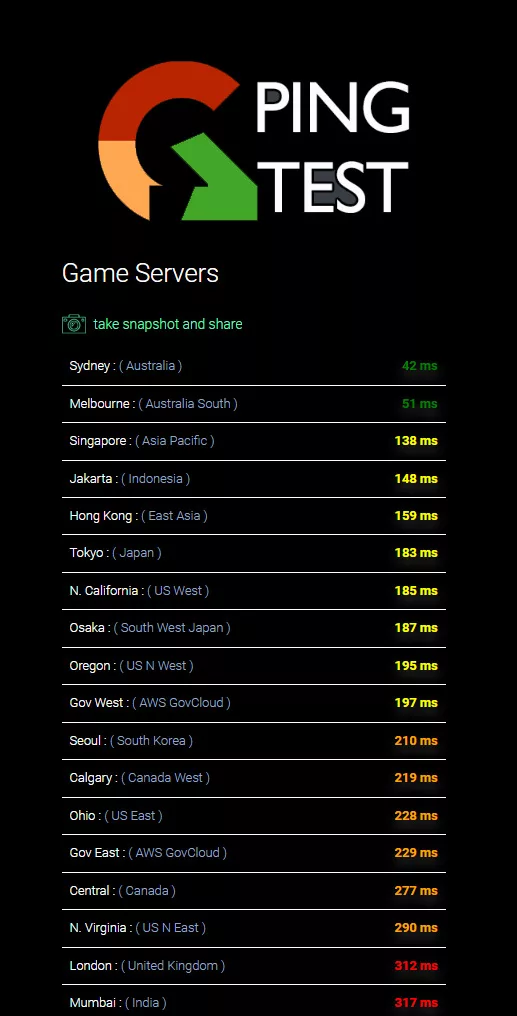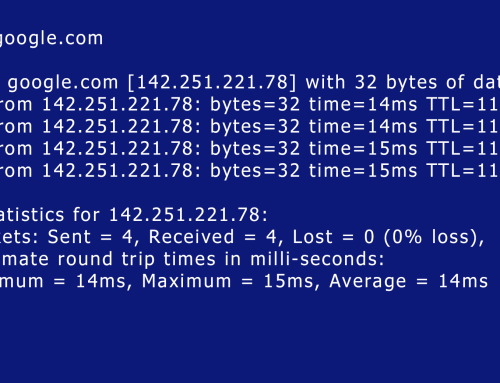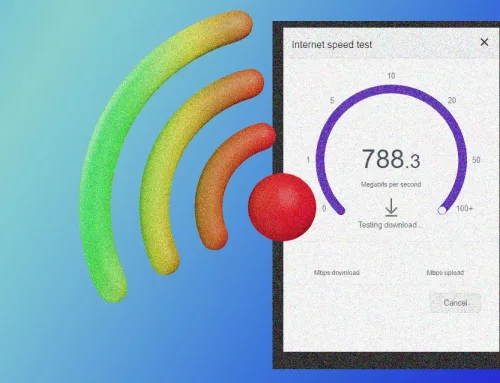In the world of online gaming, ping can make or break your experience. Whether you’re engaging in a fast-paced first-person shooter (FPS), a strategy-based real-time strategy (RTS), or a massive multiplayer online (MMO) game, your ping can drastically influence how smooth and responsive the game feels. Many gamers have experienced the frustration of delayed responses, missed shots, or lag that makes the game nearly unplayable.
So, what exactly is ping, and why is it so important for gaming? Understanding ping can help you identify the best conditions for competitive and casual gaming and, more importantly, help you figure out how to improve your connection for a better gaming experience. In this article, we’ll break down everything you need to know about ping, from what constitutes a good ping to how you can lower it to optimize your gaming performance.
What is Ping?
Ping is a measure of latency, or the time it takes for data to travel from your device to a game server and back. Think of it as a round-trip time for your connection. Measured in milliseconds (ms), a lower ping means data is sent and received quickly, resulting in a more responsive gaming experience. A higher ping, on the other hand, indicates a delay, which can lead to lag and slow reactions in the game.
In the context of gaming, ping plays a critical role in real-time gameplay. Every time you perform an action—whether shooting an enemy in an FPS or building units in an RTS game—your command is sent to the game’s server. The server processes it and sends a response back. If this process takes too long (i.e., you have a high ping), the server’s delayed response can cause lag, leading to missed shots or delayed actions.
It’s important to note that ping is different from bandwidth. While bandwidth measures the amount of data that can be sent through your connection, ping specifically measures the speed at which data is sent. This is why you can have a high-speed internet connection with poor ping, especially if you’re far from the game server or your connection is congested.
Why Does Ping Matter in Gaming?
In gaming, every millisecond counts. When playing fast-paced, competitive games, even a slight delay in your actions can lead to frustrating losses. Imagine you’re playing an FPS game and see an opponent appear. You fire your weapon, but due to high ping, your command reaches the server milliseconds too late, causing the shot to miss or hit too late. This is where ping plays a crucial role in real-time gaming experiences.
Let’s break down a few reasons why ping matters in gaming:
- Fast Response Times: In competitive games, low ping ensures that your actions are reflected in the game almost instantaneously. High ping results in delayed responses, which can severely affect gameplay.
- Synchronization with Game Server: Online games rely on synchronization between your device and the game server. Low ping ensures that you’re aligned with what’s happening in the game world at any given moment.
- Game Genre Sensitivity: Certain genres of games—especially real-time games like FPS, MOBA, and Battle Royale—are more sensitive to ping. A high ping can make these games virtually unplayable as actions like shooting, aiming, and moving are time-critical.
For example, in an MMO game, a high ping might make the game feel sluggish or delayed, but the overall experience won’t be as severely impacted as it would in an FPS game where real-time decisions and actions are key to success. Therefore, the type of game you’re playing will also influence how crucial low ping is to your gaming performance.
What is a Good Ping for Gaming?
When it comes to determining a good ping for gaming, the lower, the better. However, what is considered a “good” ping can vary depending on the type of game you’re playing and how competitive you want to be. Here’s a general guideline for ping ranges:
- 0–20ms: Exceptional. This is the optimal range for highly competitive gaming, especially in fast-paced genres like first-person shooters (FPS) or multiplayer online battle arenas (MOBAs). In this range, gameplay will feel incredibly smooth and responsive, with no noticeable delay between your actions and the game’s response.
- 20–50ms: Good. Still excellent for most types of gaming. You’ll experience smooth gameplay with no lag, making this range ideal for both casual and competitive players.
- 50–100ms: Acceptable. In this range, most games will still be playable, but you may start noticing slight delays in fast-paced games. For example, in a shooter, your actions might feel just a fraction of a second behind, but it’s still manageable for most casual gamers.
- 100–150ms: Tolerable. This is where the delay becomes noticeable, especially in games where reaction time is critical. You may experience more frequent lag or missed actions, particularly in competitive settings. However, for less time-sensitive games like strategy or turn-based games, this ping range is still playable.
- 150ms and above: Poor. Anything above this threshold will likely result in frustrating gameplay, with significant delays between your actions and the game’s responses. High ping in this range makes real-time games nearly unplayable and is likely to cause lag, rubberbanding, or disconnections.
It’s important to recognize that the type of game you’re playing affects what is considered an acceptable ping. For example, in an FPS game, even a ping of 60–70ms might be considered too high for competitive play, while in an MMO, a ping of 100ms or even higher might still be acceptable.
Many professional and competitive gamers aim to keep their ping below 30ms to ensure that their actions are registered as quickly as possible. If you’re a casual player, anything under 100ms will generally provide an enjoyable experience.
Factors That Affect Your Ping
Several factors can affect your ping, both internal and external. Understanding these factors can help you diagnose why your ping might be higher than desired and what steps you can take to reduce it.
1. Distance to the Game Server
The physical distance between your device and the game’s server is one of the most significant factors influencing ping. The further away you are from the server, the longer it takes for data to travel between your device and the server, resulting in higher ping. For example, if you’re playing on a server located in Europe while you’re in the United States, you’ll likely experience higher ping than if you were connected to a nearby server.
Some games allow you to select which server region you want to connect to. To lower your ping, always choose the server closest to your geographic location. If your preferred game doesn’t offer server selection, try playing at different times of the day when there is less global server traffic.
2. Internet Connection Type
The type of internet connection you use can also have a significant impact on your ping. In general, wired connections (like fiber or cable) provide lower ping compared to wireless connections (Wi-Fi). Wireless connections tend to have more interference and can be subject to fluctuations, which can increase latency.
For optimal performance, connect your gaming device directly to your router with an Ethernet cable, which reduces the potential for interference and ensures a more stable connection.
Here’s a quick breakdown of how different types of internet connections affect ping:
- Fiber Optic: Provides the lowest latency and best speeds, making it ideal for gaming.
- Cable: Still provides decent speeds and low ping but can be affected by congestion if many users are online in your area.
- DSL: Generally slower with higher ping due to older technology.
- Wi-Fi: Higher latency compared to wired connections, especially if you’re far from the router or experiencing interference.
3. Network Congestion
 Network congestion happens when too many devices are using the internet simultaneously, which can slow down your connection and increase ping. This is especially true during peak internet usage hours when many people in your area are online. To reduce ping, try gaming during off-peak hours or limit other internet activities in your household while gaming (e.g., streaming videos or downloading large files).
Network congestion happens when too many devices are using the internet simultaneously, which can slow down your connection and increase ping. This is especially true during peak internet usage hours when many people in your area are online. To reduce ping, try gaming during off-peak hours or limit other internet activities in your household while gaming (e.g., streaming videos or downloading large files).
4. Hardware and Network Setup
The quality of your router and modem, as well as your overall network setup, can influence ping. Old or outdated networking equipment might not be able to handle high-speed connections effectively, leading to increased latency.
If you’re experiencing high ping consistently, it may be worth upgrading to a modern router that supports faster speeds and prioritizes gaming traffic (some gaming routers offer Quality of Service (QoS) settings, which can help prioritize gaming over other activities).
Additionally, ensure your device’s network drivers are up to date, and check for any background processes or apps that might be using your internet bandwidth, as this can also affect ping.
5. Game Server Quality
The quality and stability of the game server itself can impact your ping. Sometimes, the issue isn’t on your end but with the server you’re connecting to. If the server is overloaded or located far away, your ping will naturally increase.
Some online games experience “server tick rate” issues, which can result in delayed responses even if your ping is low. In such cases, there’s little you can do other than switch servers or wait for the developers to fix the issue.
How to Lower Your Ping for Gaming
If you’re experiencing high ping during gaming, there are several steps you can take to reduce it and improve your overall performance. Here are some actionable tips:
1. Use a Wired Connection
One of the easiest and most effective ways to lower your ping is by switching from Wi-Fi to a wired Ethernet connection. Wi-Fi signals are subject to interference from walls, devices, and other wireless networks, which can result in fluctuating latency. By using an Ethernet cable to connect directly to your router, you’ll enjoy a more stable connection and lower ping.
2. Select the Closest Game Server
Many online games offer the option to choose which server region you want to connect to. Always select the server closest to your geographic location, as this will minimize the physical distance data has to travel, reducing your ping.
If your game does not allow you to select a server, try to play during off-peak hours, when there is less overall traffic, which can help lower your ping.
3. Close Background Applications
Running multiple applications in the background can consume your internet bandwidth, leading to higher ping. Make sure to close unnecessary programs, especially those that use the internet, such as streaming services, file-sharing apps, or cloud backups. This ensures your game gets the maximum available bandwidth, reducing latency.
4. Upgrade Your Router
If you’re using an older router, upgrading to a modern, high-quality gaming router can make a significant difference in reducing ping. Some routers are specifically designed for gaming, offering features like Quality of Service (QoS) settings, which prioritize gaming traffic over other activities. This can help ensure your connection is stable and latency is minimized.
5. Check for Software or Firmware Updates
Make sure your router, modem, and gaming device are using the latest firmware and software updates. Sometimes, outdated firmware can cause connection instability, leading to higher ping.
6. Use a Virtual Private Network (VPN)
While many gamers worry that using a VPN will increase their ping, there are some cases where using a VPN can actually lower it. If your internet service provider (ISP) is throttling your connection during gaming, a VPN can bypass this throttling, reducing ping. Additionally, some VPNs offer optimized servers for gaming, which can provide a more direct route to the game server.
7. Limit Other Devices on Your Network
If multiple devices in your household are connected to the same network, it can lead to increased bandwidth usage and higher ping. Try to limit the number of devices connected to your network while gaming, especially if others are streaming, downloading, or gaming simultaneously.
8. Contact Your Internet Service Provider (ISP)
If you’ve tried everything and your ping is still too high, it might be worth contacting your ISP. They may be able to offer solutions, such as upgrading your internet plan, or diagnosing any connection issues that might be affecting your performance.
Best Games for Low Ping Performance
Not all games are equally affected by ping. While some games are highly sensitive to high ping and latency, others are more forgiving. Below is a breakdown of the types of games that benefit most from low ping, and those that can handle higher latency.
Games That Require Low Ping
For certain genres, especially those involving real-time actions, having low ping is crucial for an enjoyable experience. These games demand quick responses and real-time synchronization between players and servers.
- First-Person Shooters (FPS): Games like Call of Duty, Valorant, and Counter-Strike: Global Offensive require fast reactions. A slight delay in your shot can be the difference between winning or losing. For competitive play, low ping (ideally under 50ms) is critical.
- Multiplayer Online Battle Arenas (MOBA): Games like League of Legends and Dota 2 rely on fast reactions and precise timing for abilities and movements. Low ping ensures that your actions are executed quickly without any lag.
- Battle Royale: In games like Fortnite, Apex Legends, or PUBG, where split-second decisions are necessary for survival, having low ping is important to avoid delays in movement or aiming.
Games That Can Tolerate Higher Ping
While some games demand low ping, others are more lenient. These games typically involve slower-paced gameplay or aren’t as reliant on precise timing.
- Turn-Based Strategy Games: Games like Civilization VI and XCOM are less sensitive to high ping since they don’t require fast, real-time inputs. These games are more forgiving if there’s a slight delay between actions.
- Massively Multiplayer Online Games (MMOs): Games like World of Warcraft and Final Fantasy XIV can generally tolerate higher ping, as much of the gameplay revolves around non-real-time interactions. However, in high-level raids or PvP scenarios, lower ping is still preferable.
- Single-Player Games: Since single-player games don’t require communication with a game server, ping is a non-factor. However, for online multiplayer modes or live-service games, ping may still play a role.
How to Test Your Ping for Gaming
Testing your ping is a straightforward process, and there are multiple methods available depending on whether you’re using in-game tools, third-party applications, or websites. Monitoring your ping can help you identify issues with your internet connection and make improvements as needed. Here are the best ways to test your ping for gaming:
1. In-Game Ping Tools
Many online games come with built-in ping monitoring tools that allow you to see your ping in real-time. These tools often display your current ping next to your FPS (frames per second) on the game’s user interface. Here’s how you can check your ping in some popular games:
- Fortnite: Go to the settings menu, navigate to the “HUD” tab, and enable the “Net Debug Stats” option to display your ping during matches.
- League of Legends: Press Ctrl + F while in-game to toggle the display of your current ping and FPS.
- Call of Duty: Warzone: In the settings, navigate to the “Account” tab, and turn on the “Server Latency” option to see your ping.
These tools give you a direct indication of how your connection is performing while you’re in a game. If your ping is consistently high, you can then take steps to improve it.
2. Third-Party Websites
 If your game doesn’t have built-in ping tools, or you want to test your ping to different game servers, you can use third-party websites such as Gameserverping.com to measure latency. If you don’t have a specific game you want to test against. Try this general ping test tool. This website allows you to select a game or a specific server to test your ping.
If your game doesn’t have built-in ping tools, or you want to test your ping to different game servers, you can use third-party websites such as Gameserverping.com to measure latency. If you don’t have a specific game you want to test against. Try this general ping test tool. This website allows you to select a game or a specific server to test your ping.
To test your ping with Gameserverping.com, simply:
- Navigate to the website.
- Select the game or server you’re interested in.
- View the results, which will display your average ping to the server.
3. Command Prompt (For Advanced Users)
If you’re comfortable using the command prompt, you can manually test your ping by sending a ping request to a specific IP address or domain. This method works for any server you can reach over the internet.
To test your ping via command prompt:
- Open Command Prompt (Windows) or Terminal (Mac).
- Type
ping [server IP address]and press Enter. - The results will show your ping to that server in milliseconds.
For example, typing ping google.com will return your ping to Google’s server. Replace “google.com” with the IP address or domain of your game server for more specific results.
Ping plays a crucial role in determining the quality of your online gaming experience. Whether you’re playing competitive FPS games, immersive MMORPGs, or casual strategy games, low ping ensures smooth, responsive gameplay, while high ping can result in frustrating lag and delays. Understanding what ping is, how it affects your games, and how to reduce it can greatly improve your gaming performance.
To achieve the best gaming experience:
- Aim for a ping under 50ms for competitive gaming.
- Use a wired connection and optimize your network setup for low latency.
- Choose the closest game servers and play during off-peak hours when possible.
- Regularly test your ping using in-game tools or third-party websites like Gameserverping.com.
By following these steps, you can reduce your ping, enhance your gaming experience, and stay competitive in the fast-paced world of online gaming. Lowering your ping may require some tweaks to your network and setup, but the payoff is well worth it for smoother and more enjoyable gameplay.



